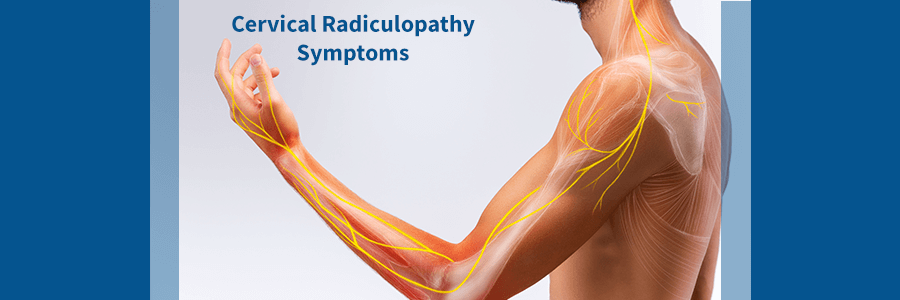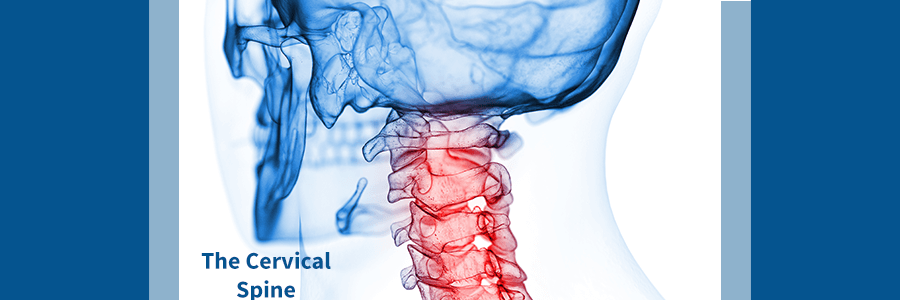-
Pain Topics
- Ankylosing Spondylitis (0)
- Arthritis (5)
- Back Pain (35)
- Bulging Disc (3)
- Degenerative Disc Disease (2)
- Facet Joint Syndrome (1)
- Failed Back Surgery (1)
- Foraminal Stenosis (2)
- Herniated Disc (5)
- Kyphosis (1)
- Neck Pain (14)
- Osteoporosis (2)
- Paget's Disease (1)
- Pinched Nerve (3)
- Radiculopathy (1)
- Sciatica (5)
- Scoliosis (5)
- SI Joint Arthritis (1)
- spinal cord injury (4)
- Spinal Deformity (1)
- Spinal Fractures (3)
- Spinal Stenosis (2)
- Spinal Tumors (1)
- Spondylolisthesis (3)
- Spondylosis (2)
- Whiplash (2)
-
Treatment Topics
- ALIF (2)
- Artificial Disc Replacement (1)
- At Home Care (4)
- Chiropractic Care (3)
- Corpectomy (1)
- Diagnostic Procedures (2)
- Diet & Healthy Lifestyle (6)
- Everyday Ergonomics (2)
- Exercises & Stretches (4)
- Facet Joint Infection (1)
- Foraminotomy (2)
- Kyphoplasty (2)
- Laminectomy (2)
- Laminotomy (2)
- Massage Therapy (1)
- Microdisectomy (2)
- Minimally Invasive Spine Surgery (13)
- Nonoperative Solutions (7)
- Pain Management (6)
- Physical Therapy (2)
- PLIF (3)
- Revision Spine Surgery (2)
- Scoliosis Brace (2)
- Self-Care (7)
- Spinal Fusion (3)
- TLIF (3)
- XLIF Corpectomy (4)
-
Media & Interactive
Is Cervical Radiculopathy Causing Your Neck & Shoulder Pain?
The spine is an interconnected network of bones, joints, nerves, and other tissues. More specifically, it is a superhighway of sensory information that permeates every square inch of your entire body. Because this structure is so dense in complexity, it also has the potential to develop all sorts of different problems. Sometimes, these conditions do not make much sense to the untrained eye. An abnormality in one area of the spine may lead to symptoms in a seemingly unrelated part of the body. Conversely, some spine-related problems do not have any observable symptoms at all.
Pinched nerves are one of the most common spinal abnormalities among patients. Medical experts refer to this condition as radiculopathy, and it may occur at almost any level of the spine. Most commonly, however, pinched nerves occur in either the lumbar (lower back) or cervical (neck) regions of the spine. Today, this article will focus on the latter of the two regions—your cervical spine.

Anatomy of the Spine
To better understand cervical radiculopathy (CR), the best place to start is with the spine itself.
The cervical spine starts at the base of the skull and extends downward into seven cervical vertebrae (labeled C1-C7). Between these bones exists a jelly-like, flexible material known as a cervical disc. Discs are flat, round, and they cushion the bones of the spine for impact-protection. Without these, everyday activities like walking or running would be extremely uncomfortable.
The other structures relevant to CR in this region are the nerves that branch out from the spine to other bodily areas. The important fact about these nerves is that they travel through tiny spaces or passageways that surround the spine. Unfortunately, there exist a slew of spinal abnormalities that can compress these tiny, neural cul-de-sacs. If there is ample compression, these contained nerves can become “pinched,” so to speak. And, the symptoms of this inevitable outcome will depend heavily on the location of the affected site.
Symptoms of Cervical Radiculopathy (CR)
As mentioned, symptoms will vary slightly depending on the location of the condition. Again, because the spine is a vastly complex network, the specific symptoms of any given case may vary wildly. That being said, the most common occurrences of CR have the following symptoms:
- C5 Radiculopathy: CR at this vertebral level affects the abduction (or opening up) of the shoulders. In more basic terms, shoulder abduction is responsible for moving the entire arm away from the body’s center. A pinched nerve in this location will make these muscles tender or weak. Additionally, the shoulder may feel sensitive or painful even when no motion is occurring at all. Although some CR cases involve numbness or tingling, this particular subtype usually does not.
- C6 Radiculopathy: This is one of the most common types of CR. This area of the spine is responsible for directing elbow flexion and wrist extension. Flexion refers to movement that decreases the angle between body parts, while extension is just the opposite. When C6 is affected by cervical radiculopathy, it often leads to pain/weakness in the biceps, wrist, thumb, and/or index finger.
- C7 Radiculopathy: This area controls the opposite motions of C6. It allows for elbow extension and wrist flexion. Radiculopathy at this vertebral level is the most common occurrence of CR. This form of the condition leads to pain/weakness from the neck all the way to the hand. Cervical radiculopathy in C7 often affects the middle finger and triceps.
- C8 Radiculopathy: The spinal nerves that exit from C8 allow for the extension of the thumb. Similar to C7 radiculopathy, when CR affects this area it causes pain/numbness from the neck to the hand. The main difference, however, is that the pain radiates along the inside of the arm to the ring and little fingers.
It’s important to note that these are simply the most common sites that one can experience pinched nerve pain. CR may also occur in C1-C4, but it usually manifests in C5-C8.

Causes of Cervical Radiculopathy (CR)
So, we now know what cervical radiculopathy is, as well as what it does to the body, but what actually causes the condition? Well, there are a lot of potential answers to this question, because there are a lot of possible conditions that can lead to nerve root compression. Abnormalities within the spine tend to snowball in this fashion. The next few passages are dedicated to detailing the most common culprits of nerve root compression.
Cervical Herniated Discs
As mentioned previously, discs are the flexible materials between vertebrae with a jelly-like core. During the natural aging process, we all experience varying degrees of structural degeneration throughout the body. This may affect the structural integrity of the discs within the spine. When the tougher exterior of a disc weakens through degeneration, the jelly core within may squeeze outside of its casing. This is known as a cervical herniated disc. Now, because matter cannot be created or destroyed, it obviously has to go somewhere. In this case, it goes somewhere it shouldn’t. The jelly core spillover impedes on the space that our neural passageways use, thereby compressing our nerves. The compression of these branches is how radiculopathy can occur in conjunction with a ruptured disc.
Cervical Spinal Stenosis
Spinal stenosis occurs when the spaces that make up the spinal canal become narrower. At first, this may sound a little confusing, because isn’t that just radiculopathy? The difference is that radiculopathy is a condition that may arise from the narrowing—it isn’t just defined as the narrowing itself. The narrowing is what medical experts refer to as cervical spinal stenosis.
Radiculopathy differs here primarily because it always has some assortment of observable symptoms in the patient. Basically, nerve roots compress, so things happen. But the narrowing in spinal stenosis does not always lead to nerve root compression, so there are not always symptoms in every case. A patient might have spinal stenosis and not even know it. Most cases, however, only need medical attention if symptoms appear and become progressively worse with time. So, if you are worried about whether or not you may have this condition, then don’t. The signs will become apparent when you need to seek out a doctor’s guidance.
Cervical Bone Spurs
Like spinal stenosis, bone spurs may not lead to any symptoms in the patient. In some cases, however, they cause pain and difficulty with the movement of the connected body part. Bone spurs are small bony protrusions that may develop in the joints as well as on the spinal vertebrae. Osteoarthritis is the usual culprit of cervical bone spurs, as the body produces them as a countermeasure to repair lost cartilage. In extreme cases, bone spurs protrude into neural passageways, which may lead to a pinched nerve.
Cervical Degenerative Disc Disease
Structural degeneration is a natural part of the aging process, but when it affects functions and causes symptoms, it’s classified as a disease. Some of us are lucky enough to show no symptoms from degeneration, whereas others experience bone spurs, radiculopathy, and more. In terms of radiculopathy, cervical degenerative disc disease is the cause of a cause. The loss of structural integrity in spinal discs may cause them to crack and dry out, which may cause them to herniate, which may lead to radiculopathy, and so on. Again, abnormalities of the spine tend to snowball in such a way.

Treatment Options for Cervical Radiculopathy (CR)
In the most basic terms, there are two types of treatment for any medical conditions. There are conservative radiculopathy treatments and surgery (which is further broken down into minimally invasive or traditional interventions). Doctors will try to explore the best treatment options in tiers, but they may also skip some levels depending on the severity of your case. For example, your condition may require immediate surgery and hence not be considered viable for conservative treatment (usually the preferred choice, if feasible). If you absolutely require surgery, then good doctors will always prefer minimally invasive procedures over traditional open techniques.
Examples of conservative treatments include:
- Physical therapy
- Chiropractic therapy
- Certain exercises
- Pain medication, such as NSAIDs
- Steroid Injections
- Narcotics
Of course, there is an endless number of treatments… and, surgery is no different. What will matter, however, is whether or not they are applicable options for your condition. One of the most common procedures for radiculopathy involves spinal fusion, but that may not be right for you. In order to get the best treatment, communicate with your doctor and discuss your symptoms. It may turn out that a spinal decompression is better for you than a spinal fusion, for example.
If you are experiencing painful sensations, regardless of whether they are chronic or acute, please contact us at (855) 210-0899. Dr. Daveed Frazier and his team of highly trained spine specialists will work tirelessly to find the perfect treatment plan for your condition. If you have any questions, or simply need help scheduling an appointment, do not hesitate to give us a call.
TAGS: Cervical Radiculopathy
Explore New York City Spine

